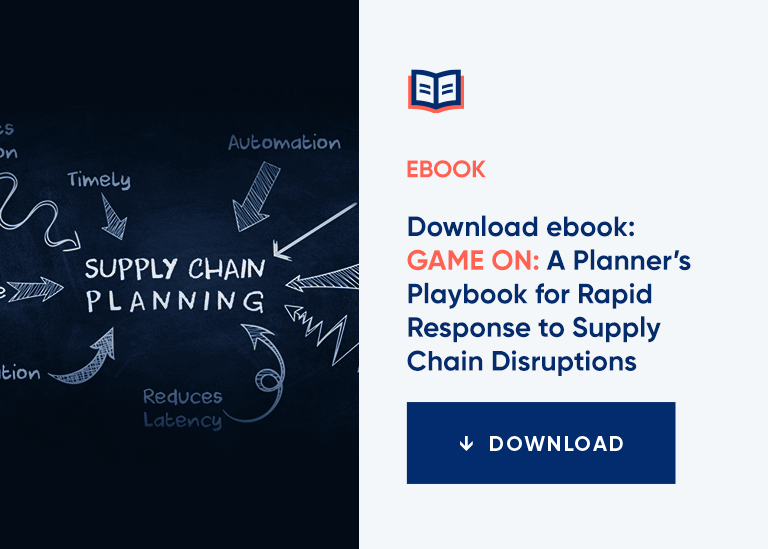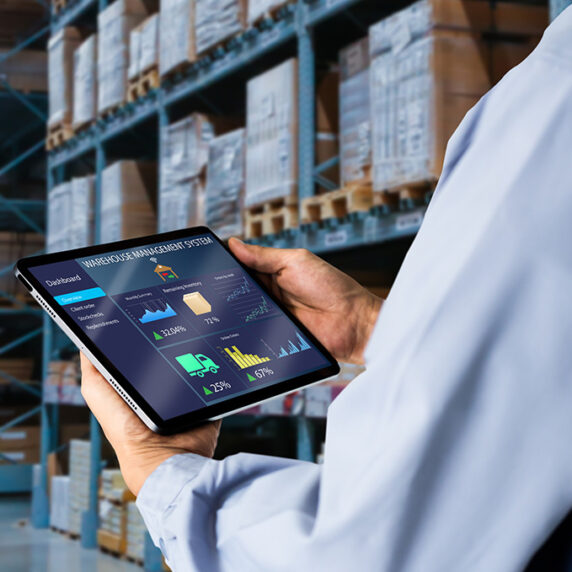Gartner’s Five-Stage Maturity Model for Supply Chain Analytics
There are supply chain and demand analytics models that describe the type of analytics being deployed (e.g., descriptive, prescriptive, etc.). Now Gartner has created a different look at the issue by creating a five-stage maturity model for assessing the overall maturity level of your organization in using supply chain analytics.
Gartner reports a strong correlation between supply chain organizations that use analytics and improved business performance. They cite manufacturers and retailer benefits such as 20% reduction in inventory, 10% improvement in customer service levels, 10% increase in revenue, and 25% increase in available capacity. They suggest that to reap these benefits, companies chart a roadmap for improvement to higher levels of supply chain analytics maturity. To enable this journey, they recommend that organizations start by assessing the current maturity level. So analyst Noha Tohamy has outlined a maturity model in her recently released “Use Gartner’s Five-Stage Maturity Model to Reach Supply Chain Analytics Excellence.”
The model maps each stage of maturity across seven dimensions (see diagram above): goal, data, skill sets, organizational structure, use cases (applications), analytics techniques, and supporting technology. The key, Gartner says, is that each of the seven dimensions is interconnected. You can’t forge ahead in one area like analytics techniques without considering other dimensions such as available talent or reliable data.
Here are the five stages:
- In Stage 1 the goal is to use data to measure a single metric within a particular function, focused on after-the-fact performance. Excel spreadsheets dominate, providing limited analytics.
- In Stage 2 the aim is to measure performance and provide data for decision making in supply chain functions. Companies bring in data from ERP and other systems. The organization operates in functional pockets, with little collaboration or knowledge sharing. Applications target improvements in functional silos, with supporting technology from Excel spreadsheets, reports and dashboards.
- Stage 3 improves decision making across the internal supply chain. Companies focus on data harmonization and good data governance so the analytics can leverage end-to-end process data. The supply chain data is aligned with areas like product development, sales, and finance. Applications focus on establishing visibility and performance measurement across processes—like using descriptive analytics to determine the cost to serve a customer across the chain. Advanced analytics emphasize predicting scenarios and prescribing actions across the entire supply chain—like simulating the impact of order variability on production plans.
- In Stage 4 the objective is to improve performance of a more extended supply chain of trading partners. Data comes from both internal sources and external trading partners to focus analytics at a network level. Technology concentrates on multi-enterprise capabilities to create outside-in visibility and measure performance across the extended chain. Analytics are faster and more dynamic, and exploit trading partner data—i.e., a CPG manufacturer creates forecasts for a new product launch, then adjusts replenishment plans based on retail partner downstream data.
- At Stage 5 the goal changes to measuring and improving performance across a trading partner network to satisfy customer demand while maintaining margin. Data comes from public and unstructured sources and the IoT. Complex applications focus on visibility, improved performance, and creating value across the network. Supporting technologies automate decision making and execution, factoring in complex trade-offs and overall business goals among trading partners—like setting optimal safety stock levels for networked suppliers. Analytics support new business models and demand shaping. In-memory computing manages the large data streams for rapid response.
By understanding your current state, Gartner says, you are in a better position to map a journey to the next level of analytics, understanding where and how to develop across seven dimensions to reach higher levels of maturity and business performance.
Data Sources and Data Management Change
According to Gartner, data sources and data management supporting supply chain analytics change with each stage of maturity.
In Stage 1, data sources are mostly disjointed documents Excel spreadsheets. Data management relies on manual data cleanliness and harmonization that results in high levels of errors and lack of confidence in data quality.
In Stage 2, ERP and supply chain functional systems are able to handle large volume of more granular data from enterprise and functional systems. Data quality improves in functional areas, but there are major challenges with consistency in the definition of data and data governance across supply chain functions.
In Stage 3, ERPs and cross functional supply chain systems, dedicated supply chain data sources are able to handle big volume of internal transactional data of functional and cross functional processes. There are major efforts for data consistency and harmonization with other business areas and across supply chain functions.
In Stage 4, in addition to internal data from across the enterprise, external data sources from B2B trading partners are able to handle large data volumes from the extended supply chain. Data velocity and variety increases in some of the supply chain processes. There is a focus on consistency, standardization and improved data governance with external trading partners.
Stage 5 includes operational technology/IoT data from across the enterprise, public sources and network of trading partners. Sources of data include high velocity and variety, and large volumes from IoT environments. Firms work with trading partner networks and participate in industry consortia for data standardization and data governance.
Gartner’s Definition of Terms
Advanced Analytics – Analysis of all kinds of data using sophisticated quantitative methods to produce insights that traditional approaches to business intelligence (BI) — such as query and reporting — are unlikely to discover. Advanced analytics span predictive, prescriptive and artificial intelligence techniques.
Descriptive Analytics – The examination of data or content to answer the question “What happened?” (or What is happening?), characterized by traditional BI and visualizations, and dashboards.







